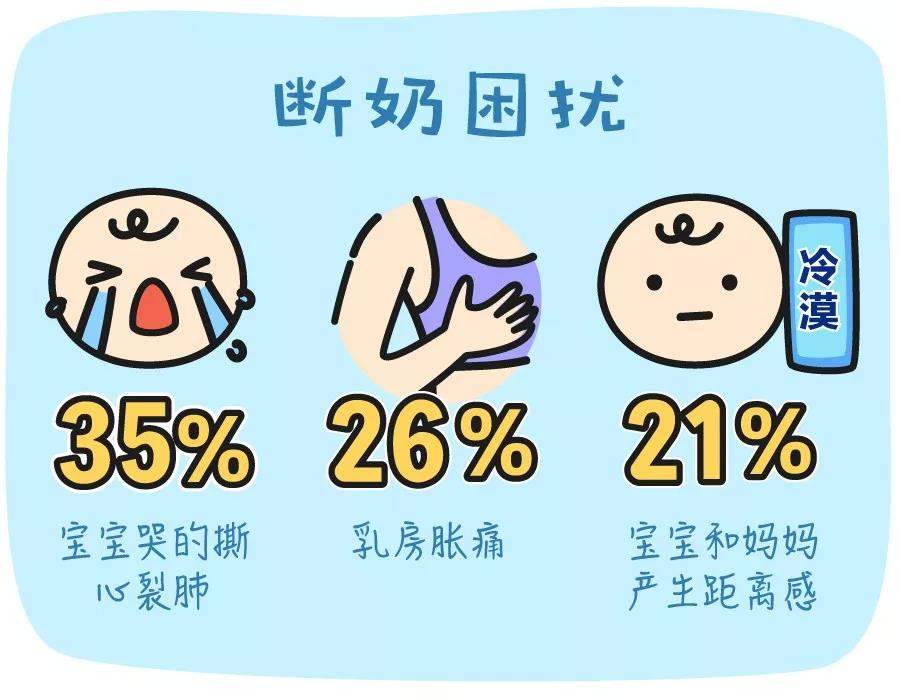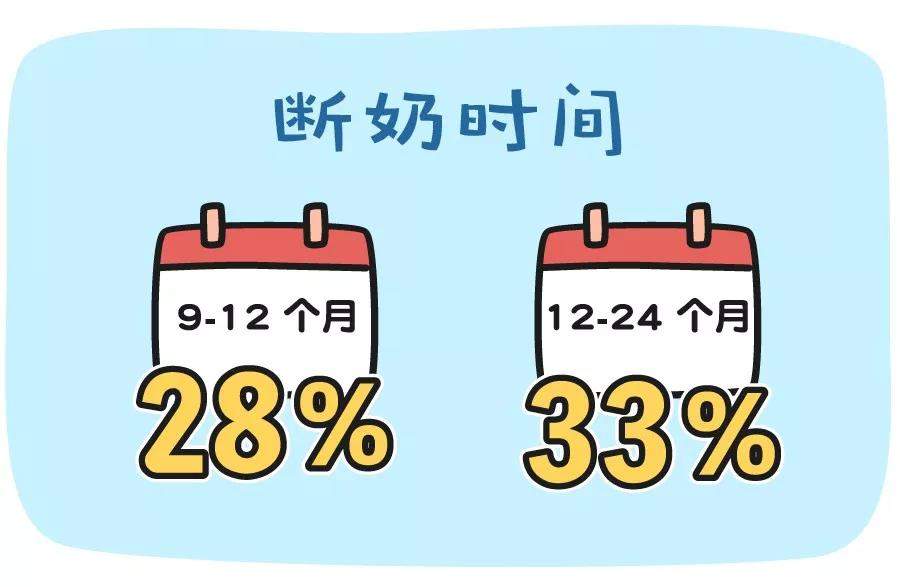Weaning is an inevitable problem for babies to face during their growth.
It seems very simple, but if it is not properly handled, it will have adverse effects on both mother and baby.
Clove Mother and Germany’s Xibao launched a survey on weaning in a tweet on January 17.
In this survey, we collected the data of 2412 fans of clove mothers. The results show that 91% of mothers still have many perplexities about weaning.
I believe many mothers have also encountered the following troubles:

Faced with weaning-related problems, mothers do not need to worry too much, but only need to adjust according to scientific and reasonable methods to successfully cross the weaning barrier.
Today, let’s talk about how to wean babies scientifically.
What is the best time to wean?
According to the survey, the weaning time of babies is basically concentrated between 6 and 24 months, with the number of babies weaned between 9 and 12 months and 12 to 24 months ranking first.

WHO recommends that babies should only be breast-fed for the first 6 months after birth, and then breast-fed with solid food until at least 1 year old. However, if conditions permit, the baby is willing, and it is recommended that the lactation period can be extended to 2 years old or more.
In other words, there is no fixed standard for weaning when choosing what. However, when the baby is almost over 1 year old and does not want to eat milk, it is the easiest to wean.
Of course, it is up to the mother and the baby to decide whether to wean in what. If both you and the baby are willing, you can extend the breastfeeding time as much as possible.
No matter when the mother chooses to wean the baby, she should comprehensively consider the needs of the family, as well as the situation of the baby and the mother, conform to the natural growth law of the baby, do not compare with other babies, but constantly adjust the weaning plan according to the actual situation.
Only in this way, is the most suitable for oneself and the baby, and the most scientific and reasonable weaning timing.
How Let Baby Leave Milk Gently [Take Scientific Methods]
Knowing the timing of weaning, the next step is to choose the appropriate weaning method. For weaning, different mothers have different methods.
Statistics show that 43% of mothers will slowly reduce the number and time of breast-feeding every day, and 27% of mothers will use bottles to feed breast milk in advance, but some mothers still adopt the following wrong methods-

This is really too cruel for the baby.
Weaning does not mean cutting off one’s mother. Every child deserves to be treated gently, so how should one do it gently?
1. Reduce the number of parent feeds
Reducing the number of times of breast-feeding, shortening the time of each breast-feeding and prolonging the time interval between two breast-feeding can help babies wean step by step.
At the same time, reducing the number of times of parent feeding can reduce the baby’s demand for milk, and the mother’s milk secretion will be reduced accordingly, which can relieve breast swelling.
2. Pick the milk that the child is most likely to forget and break it first.
You can choose the milk that your child is most likely to forget first, such as the milk during the day or in the afternoon, because your baby is usually more active and it is easier to forget to drink milk.
You can also change your work and rest, specially take your children out of the house, and weaken the association between environment, time and milk drinking.

3. Breast milk is fed in bottles in advance for transition.
It may be difficult for exclusively breast-fed infants to adapt to bottle feeding. They can adapt to bottle feeding some time in advance. Starting from bottle feeding, they can increase the number of bottle feeding every day and gradually reduce parent feeding.
Older babies can be fed directly with cups after weaning.
After weaning, if the baby is not over 1 year old, it needs to be fed with infant formula. Babies after 1 year old can choose formula milk, milk, yogurt, etc. as part of a balanced diet.
Step 4 Pay Attention to Breast Swelling
If the mother has breast swelling during weaning, some milk can be squeezed out appropriately to relieve the swelling. Once the symptoms are relieved, milking should be stopped. Never empty the breast, because it will increase milk production.
If the breast is red, swollen, hot and painful, it can be relieved by cold compress. Some painkillers, such as ibuprofen, can be used for severe distending pain.
5. Communicate more with your baby
Some babies are very attached to their mothers during weaning, and it is suggested that other caregivers besides their mothers can nurse or provide food for the babies.
However, during weaning, mothers should continue to keep in close contact with their babies in other ways. For example, accompany the baby to read picture books, play games with him, prepare delicious food for the child, and let the child feel love.
Remember, never wean your baby when he is allergic to food, sick and feverish, vaccinated, and anxious about separation. At this time, your child especially needs to get security and comfort from your mother’s breast. Sudden weaning will aggravate your baby’s anxiety.
